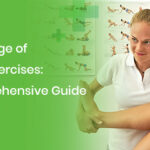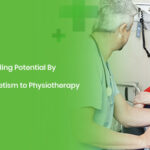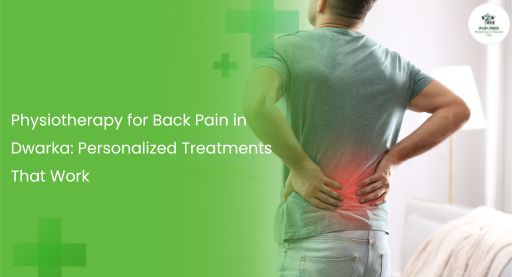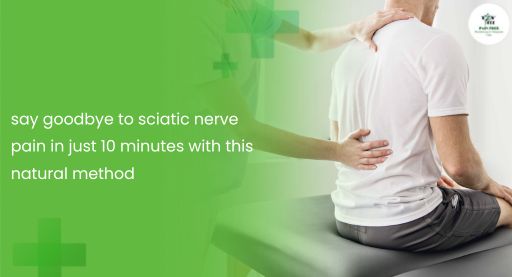Distinguishing Active Isolated Stretching Exercises
Active Isolated Stretching (AIS) has gained popularity in recent years for its unique approach to improving flexibility and range of motion. Today, we’ll explore what sets AIS apart from other stretching exercises, providing examples of both AIS and traditional stretches to highlight the distinctions.
Brief Overview of Active Isolated Stretching (AIS):
AIS is a stretching technique that involves isolating specific muscles and holding each stretch for only two seconds. Developed by Aaron L. Mattes, AIS aims to improve flexibility, enhance range of motion, and prevent injuries.
Key Characteristics of Active Isolated Stretching:
Today we’ll discuss all about Active Isolated Stretching. Pain-free physiotherapy and chiropractic clinics focus on tailored exercises according to your needs. Now let’s dive into features of AIS.
- Brief Duration: Each stretch is held for a short duration (around two seconds).
- Targeted Muscle Isolation: Focus on individual muscles or muscle groups.
- Active Involvement: Engages the target muscle actively during stretching.
Comparing AIS with Traditional Stretching: Dynamic vs. Static Stretching:
Now let’s compare AIS with traditional stretching and learn how pain-free physiotherapy can help you with static and dynamic stretching.
- Static Stretching: Involves holding a stretch for an extended period (15-60 seconds).
- Example: Traditional hamstring stretch, where you reach for your toes and hold.
- Dynamic Stretching: Incorporates movement into stretching routines.
- Example: Leg swings or arm circles before a workout.
- Static Stretching: Involves holding a stretch for an extended period (15-60 seconds).
Benefits
- Improved Flexibility: AIS enhances flexibility by targeting specific muscle groups.
- Enhanced Circulation: Brief stretches promote better blood circulation to the targeted area.
- Injury Prevention: AIS reduces the risk of muscle strain and injury by gradually increasing flexibility.
Illustrative Examples
- Hamstring Stretch:
- Sit on the floor with one leg extended.
- Use a strap or belt to loop around the foot of the extended leg.
- Gently lift the leg using the strap until a stretch is felt in the hamstring.
- Hold for two seconds and repeat.
- Quadriceps Stretch:
- Stand with one hand against a wall for support.
- Bend one knee, bringing the foot toward the buttocks.
- Grab the ankle with your free hand and hold for two seconds.
- Repeat on the other leg.
- Shoulder Stretch:
- Bring one arm across the chest.
- Use the opposite hand to gently pull the arm towards the chest.
- Hold for two seconds and switch sides.
Why AIS Stands Out:
- Efficiency: AIS achieves results with shorter stretches due to its focused approach.
- Less Risk of Injury: By avoiding prolonged stretches, the risk of overstretching and injury is minimized.
- Time-Saving: Ideal for individuals with a busy schedule, as effective stretches can be performed in a shorter time frame.
How AIS Complements Other Exercises:
- Pre-Workout Routine: Incorporating AIS before a workout prepares muscles for activity.
- Post-Workout Recovery: Using AIS after exercise helps in relaxing and elongating muscles, reducing post-exercise soreness.
The Science Behind AIS:
- Reciprocal Inhibition: AIS leverages the principle of reciprocal inhibition, where contracting one muscle group leads to the relaxation of its antagonist.
- Neuromuscular Facilitation: By engaging the target muscle during stretching, AIS stimulates the neuromuscular pathways, enhancing muscle memory.
In a Crux:
In conclusion, AIS stands out as a dynamic and effective method for improving flexibility and preventing injuries. Its unique characteristics, such as brief stretch duration and targeted muscle isolation, distinguish it from traditional stretching techniques. The efficiency of AIS makes it a time-saving option for individuals with busy schedules, while its active involvement ensures better engagement of muscles.
By incorporating AIS into your routine, you can unlock the full potential of your muscles, whether it’s for a pre-workout warm-up or post-exercise recovery. As we embrace the holistic benefits of AIS , we invite you to explore the world of pain-free physiotherapy.
Visit our site for more insights, expert advice, and personalized guidance on AIS and other pain-free physiotherapy techniques. Unlock your body’s potential for flexibility and strength at painfreephysiotherapy.com. Your journey to a more flexible and resilient body starts here!











